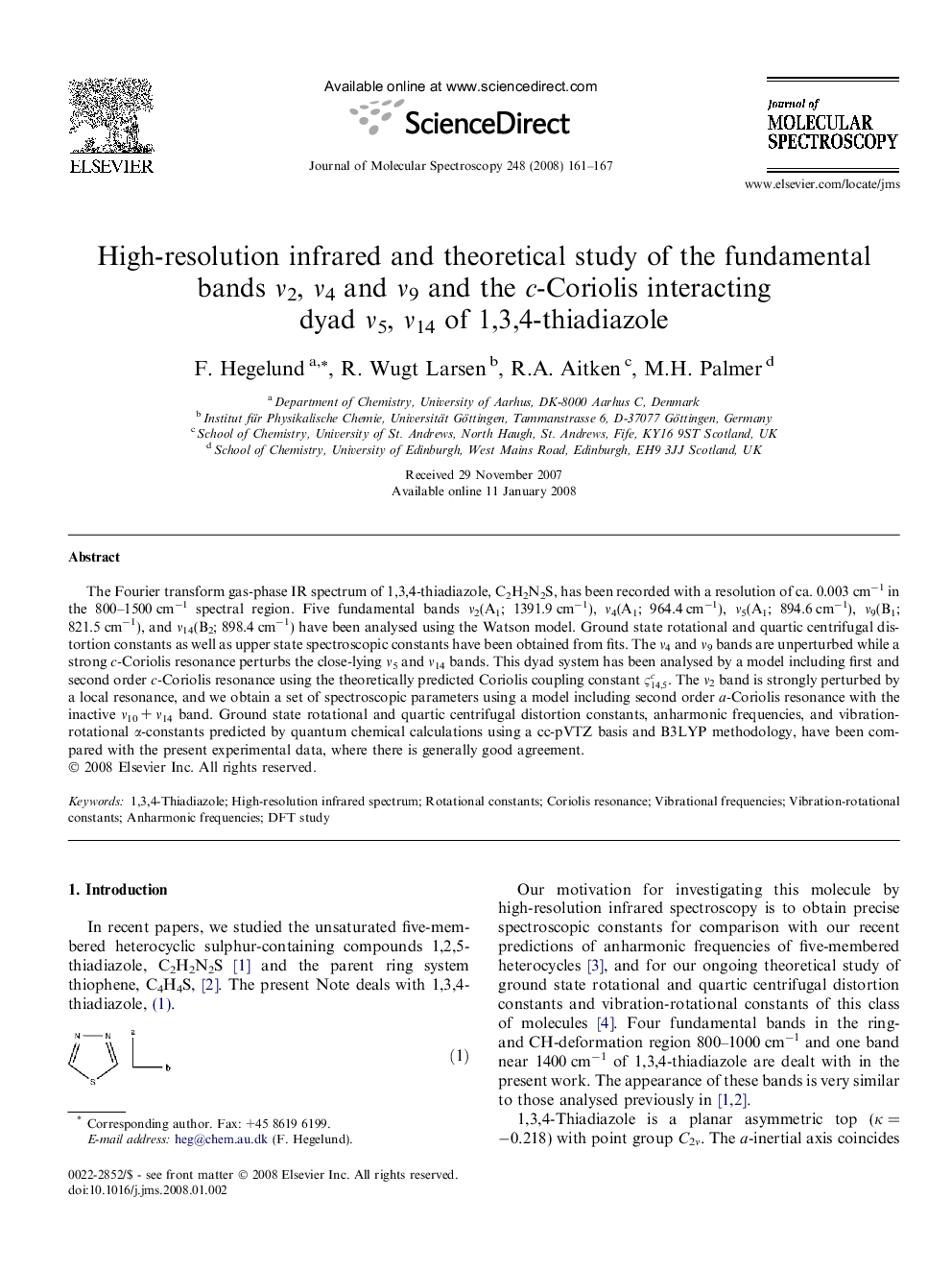| Article ID | Journal | Published Year | Pages | File Type |
|---|---|---|---|---|
| 5415726 | Journal of Molecular Spectroscopy | 2008 | 7 Pages |
Abstract
The Fourier transform gas-phase IR spectrum of 1,3,4-thiadiazole, C2H2N2S, has been recorded with a resolution of ca. 0.003 cmâ1 in the 800-1500 cmâ1 spectral region. Five fundamental bands ν2(A1; 1391.9 cmâ1), ν4(A1; 964.4 cmâ1), ν5(A1; 894.6 cmâ1), ν9(B1; 821.5 cmâ1), and ν14(B2; 898.4 cmâ1) have been analysed using the Watson model. Ground state rotational and quartic centrifugal distortion constants as well as upper state spectroscopic constants have been obtained from fits. The ν4 and ν9 bands are unperturbed while a strong c-Coriolis resonance perturbs the close-lying ν5 and ν14 bands. This dyad system has been analysed by a model including first and second order c-Coriolis resonance using the theoretically predicted Coriolis coupling constant Ï14,5c. The ν2 band is strongly perturbed by a local resonance, and we obtain a set of spectroscopic parameters using a model including second order a-Coriolis resonance with the inactive ν10 + ν14 band. Ground state rotational and quartic centrifugal distortion constants, anharmonic frequencies, and vibration-rotational α-constants predicted by quantum chemical calculations using a cc-pVTZ basis and B3LYP methodology, have been compared with the present experimental data, where there is generally good agreement.
Keywords
Related Topics
Physical Sciences and Engineering
Chemistry
Physical and Theoretical Chemistry
Authors
F. Hegelund, R. Wugt Larsen, R.A. Aitken, M.H. Palmer,
